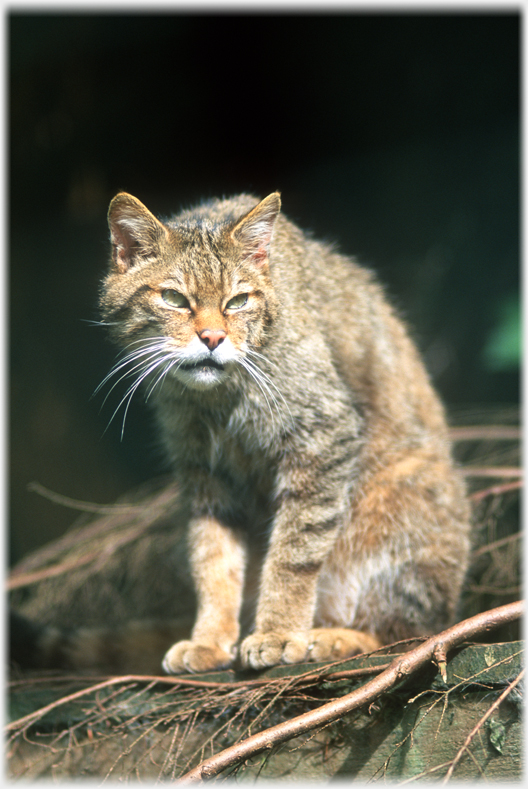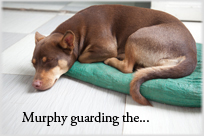
Wild Cat
...the real table, if there is one, is not the same as what we immediately experience by sight or touch or hearing. The real table, if there is one, is not immediately known to us at all, but must be an inference from what is known.
Bertrand Russell (1912)

The last page featured
dragons
 To westerners dragons seem very good examples of imaginary beings - coming from within our heads.
to illustrate Hume’s dichotomy of ideas and impressions, so by comparison an image of
a table
To westerners dragons seem very good examples of imaginary beings - coming from within our heads.
to illustrate Hume’s dichotomy of ideas and impressions, so by comparison an image of
a table
 A page on the objects of our worlds, and that these are composed by consciousness.
would seem drab. This wild cat serves Russell’s point just as well, for tables can be thumped, and wild cats may screech at us; both objects seemingly establishing their independence from us. Yet we do not seem to encounter directly those independent objects. The cat we perceive, as Russell has been explaining, is largely a human composition, as the colour, texture, and its voice are all composed by our relevant modes of perception. Here we can see a new dichotomy opening: an opposition between what we perceive, as against the
‘real’ object.
A page on the objects of our worlds, and that these are composed by consciousness.
would seem drab. This wild cat serves Russell’s point just as well, for tables can be thumped, and wild cats may screech at us; both objects seemingly establishing their independence from us. Yet we do not seem to encounter directly those independent objects. The cat we perceive, as Russell has been explaining, is largely a human composition, as the colour, texture, and its voice are all composed by our relevant modes of perception. Here we can see a new dichotomy opening: an opposition between what we perceive, as against the
‘real’ object.
 As soon as we start to suggest that there are additional real objects contradictions abound.
So now we have: ideas, impressions, and ‘objects’ that we know only by inference. Hume's dichotomy has become Russell's trichotomy.
As soon as we start to suggest that there are additional real objects contradictions abound.
So now we have: ideas, impressions, and ‘objects’ that we know only by inference. Hume's dichotomy has become Russell's trichotomy.
The Problems of Philosophy p. 1/2 Oxford University Press.
The wild-cat pictured was captive and not wild. He was known as Mr Hiss, and lived in the Kirkcudbright Wildlife Park; so wild in breed and nature, rather than way of life.
Above hovering on blue introduces a link: click to go, move away to stay.

Saturday 8th August 2020
 ...guide to this site
...guide to this site